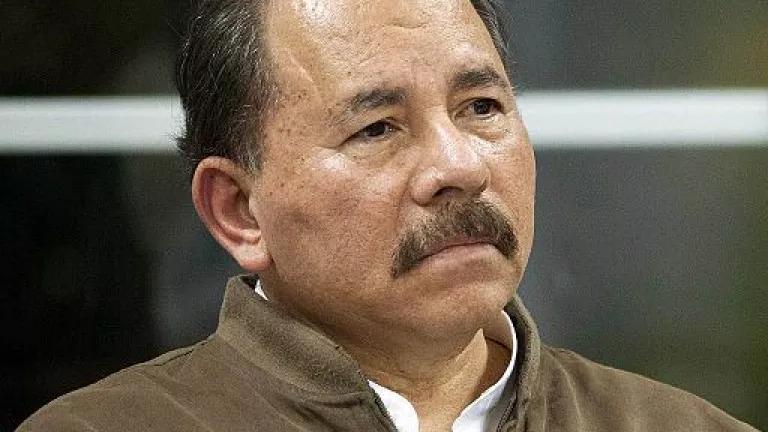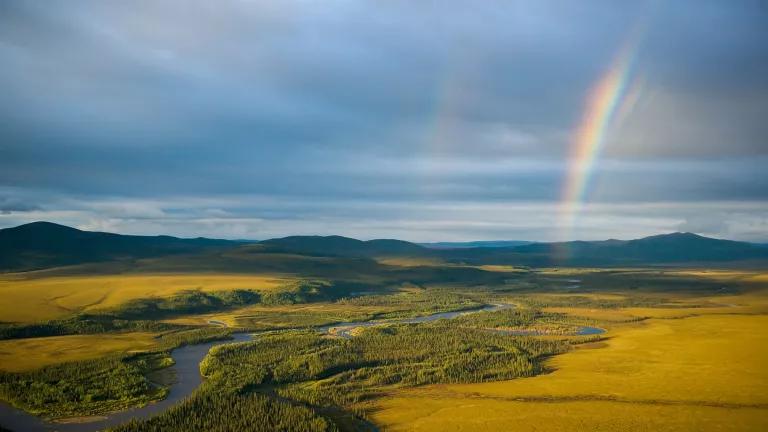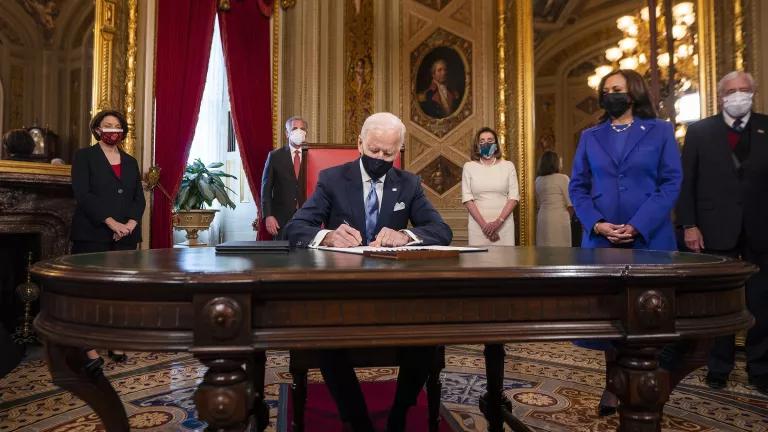Latin America Green News 10/23 – 10/29/2017

THIS WEEK
- Nicaragua joins Paris Climate Treaty, leaving the U.S. and Syria behind
- Global deforestation hits record high
- Last-ditch efforts to save the vaquita get underway in Mexico
To subscribe to NRDC's Latin America Green News click here.
FEATURE: NICARAGUA JOINS PARIS CLIMATE TREATY
On October 20 Nicaragua’s vice president signed the Paris Climate Treaty, leading to the Central American country’s formal accession on October 23rd which will take effect on November 22nd. The country did not join with other countries supporting they agreement in 2015 because the government did not believe it went far enough to mitigate climate change. However, Nicaragua’s leaders changed position because, “even though it is not an ideal treaty, it is the only instrument that currently allows for unity of intentions and efforts” to reduce climate change impacts. Patricia Espinosa, Executive Secretary of the United Nations Framework Convention on Climate Change (UNFCCC), highlighted that “all Parties of the Agreement are important and necessary in the fight against climate change.” She also pointed out that Nicaragua is the fourth most vulnerable country to climate change in the world. Nicaragua is now the 169th country to sign the accord, leaving the U.S. and Syria as the only two countries who are not parties to the treaty. (El Espectador 10/24/2017; El Nuevo Día 10/23/2017; Centro de Noticias ONU 10/24/2017)
Climate Change
Mayors of 32 municipalities in Chile signed a declaration to commit to working on climate change, both to mitigate the problem and to adapt to its effects. As members of the Chilean Network of Municipalities Facing Climate Change, which includes 36 municipalities from 11 regions, the mayors want to better integrate the issue of climate change into management, planning and local development in the country. Among their proposals is the creation of a Climate Change law. They presented their declaration to the Minister of Environment, Marcelo Mena, on October 23rd, who stated, “The community work is fundamental for climate action because this global problem needs concrete actions and a real way to achieve it is through municipal action.” Mena will represent Chile at the upcoming climate negotiations known as COP23 in Bonn, Germany. (El Mostrador 10/23/2017)
Clean Energy
Sixty-one percent of Honduras’ energy production comes from renewable sources. The country’s 15 solar PV plants, which produce 454 MW, make the Honduras the biggest producer of solar energy in Central America. Wind power is the second-largest source of renewable energy, with two wind farms that produce 175 MW. The country’s hydroelectric plants produce 670.4 MW and one geothermal plant produces 17 MW. (ENEE 9/28/2017; Forbes 10/23/2017)
Chile and Mexico are among the ten best countries to invest in renewable energy. According to the EY Global Renewable Energy Country Attractiveness Index 2017, these two Latin American countries are in ranked 8th and 9th respectively. Chile fell four places in 2016 due to the decrease in new investment in the renewables sector. Mexico barely increased its investment in the sector in the last year. However, in August 2016, a Spanish company announced the investment of $600,000 to build a wind farm in the state of Tamaulipas. The index evaluates countries’ policies on renewables, fiscal incentives, investment risks, natural resources availability, and their macroeconomic stability. (El Economista 10/23/2017)
Transportation
The cities of Quito, Ecuador and Mexico City, Mexico are among 12 cities that said they would “procure only zero-emissions buses by 2025”. Caroline Watson, from C40 – an organization that includes 90 of the world’s biggest cities – said this pledge is meant to raise the bar and encourage the private sector to increase in green investment in cities. London, Paris, Los Angeles, Cape Town, Copenhagen, Barcelona, Vancouver, Milan, Seattle, and Auckland also committed to buy only zero-emissions buses by 2025 and to make major areas, such as parks and pedestrian areas, free of fossil fuel emissions by 2030. (Reuters 23/10/2017)
Conservation
Lorenzo Rojas-Bracho, director of the Vaquita CPR program that aims to save the vaquita marina in Mexico, said that activities to save the rare porpoise will accelerate. Vaquita CPR is engaged in a last-ditch plan to save the remaining 20-30 vaquitas by moving them to a safer location where fishing activities cannot threaten their survival. The plan to protect the animal was put into action on October 12th. The first vaquita, a six-month-old female, was captured on October 19th. After weighing and determining the vaquita’s age, the team of scientists decided to return it to the sea. Proponents of this effort to save the vaquita say this capture proved that the species can be caught and transported. During his visit the state of Baja California Sur, the Secretary of the Environment in Mexico, Rafael Pacchiano Alamán, said that at least 17 vaquitas were spotted in the Gulf of California. (EcoWatch 10/26/2017; Excelsior 10/20/2017; La Voz de la Frontera 10/25/2017; El Independiente 10/26.2017)
Chile could become the first country in Latin America to ban plastic bags in its coastal municipalities. Chile’s president, Michelle Bachelet, gave this announcement during a visit to the UN. Sixty municipalities will be participating in this new effort. According to the Ministry of Environment in Chile, 90 percent of shorebirds have plastic in their stomachs. (Biobiochile 10/21/2017).
Deforestation
The planet lost a record level of 29.7 million hectares of forest in 2016—a one-year increase of 51 percent—according to a report released by Global Forest Watch (GFW). This rise is partly related to the effects of El Niño and climate change, which created dry conditions conducive to intensifying forest fires. Agriculture, logging and mining also contributed to deforestation. The Brazilian Amazon lost 3.7 million hectares, more than triple its loss in 2015. Recent fires in California and Portugal are expected to raise the number of forests destroyed in 2017 to a new record. (AFP via El Periódico de México 10/24/2017)
In response to this devastating trend of degradation, Indigenous leaders from across Latin America assembled at the headquarters of the Royal Society to call for global support in their fight against deforestation. The coalition is made up of Indigenous communities of Mexico, Guatemala, Honduras, Nicaragua, Costa Rica, Panama, Colombia, Peru, Ecuador, Bolivia, Venezuela and Brazil, as well as Congo and Indonesia. At the summit, experts from the non-governmental organization Climate Focus presented a study concluding that investments to reduce deforestation account for just 2 percent of the $167 billion allocated to reduce carbon emissions. Indigenous leaders decried the low funding they receive, despite their crucial role as guarantors for climate stability. The forest-dwellers called for a direct dialogue with political representatives that recognizes traditional ecological knowledge, cultural heritage and intellectual property rights, in order to ensure the life and sustainability of Mother Earth. They also denounced the deaths of 200 activists who defended forests in 2016, a figure that is increasing, according to the London-based organization Global Witness. (La Estrella de Panamá 10/24/2017)
In Iberia, Madre de Dios—a municipality located within the Amazon region of Peru near the border with Bolivia and Brazil—local rubber tappers expressed concern about encroachment from ranching and the construction of an Interoceanic Highway. Last year, communal rubber tappers from this area sustainably produced more than 2,000 kilograms of natural latex, sold for $4 per kilo to shoemakers in Portugal. In 2008, the regional government of Madre de Dios granted the collective rubber tappers a concession of nearly 7,900 hectares. However, a decade later, only half of that area remains because ranchers invaded and burned 4,000 of the hectares to convert the land into corn, banana or papaya plantations and livestock grazing areas. The July 2010 construction of an Interoceanic Highway that lies just 15 kilometers away from the rubber source exacerbated this process of enclosure and dispossession. According to a report published recently by the Andean Amazon Monitoring Project, 435 hectares of forest were lost around Iberia between July and August of this year alone. (Mongabay Latam 10/25/2017)
In another historic rubber production zone of the Amazon, Colombia’s Minister of Environment and Sustainable Development Luis Gilberto Murrillo Urrutia announced that the region of Putumayo will host a pilot project called Bosques de Paz (Forests of Peace) to restore areas that have degraded due to illicit cultivation. The town of Orito will become the first municipality to adopt the new environmental zoning policy for a span of 10 years. Touring the area, Murillo Urrutia participated in a workshop with Afro-Colombian communities on sustainable development, geared toward abandoning coca production that contributes to deforestation. (MiPutumayo 10/25/2017)
This week's blog features contributions from Dr. James Blair and Andrés Anchondo.




